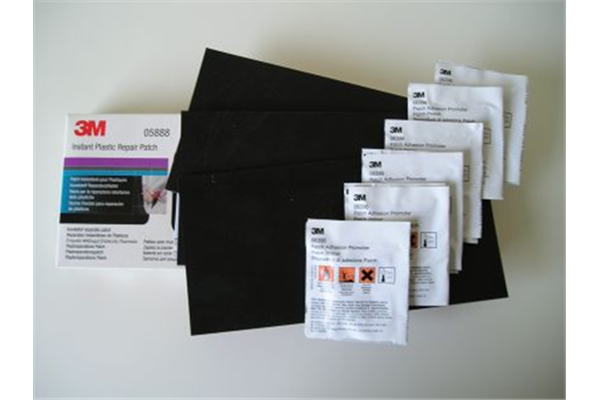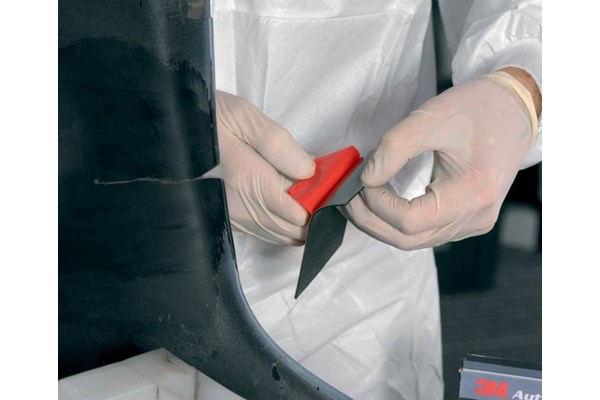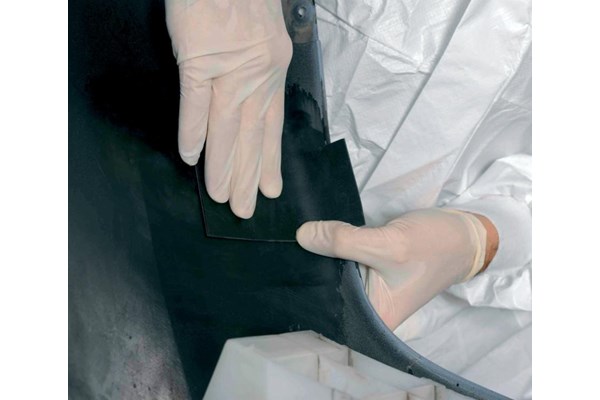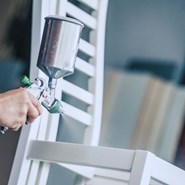







Automix Instant Plastic Repair Patch 05888
About the product
3M Flexible Plastic Patch, a popular repair material for automotive bumpers, reinforces the inside of a two-sided plastic repair where the damage has penetrated through the plastic material.
3M Plastic repair patch is used for repairing bumpers. The flexible plastic repair patch reinforces the inside of a two-sided plastic repair where the damage has gone through the plastic. It does not require sanding before application and has no curing time to delay repair work.
Give damaged bumpers extra strength with the 3M Plastic Repair Patch. The fast curing, flexible and sandable repair patch reinforces the damage that has gone through the plastic. Plastic repair patches do not require sanding prior to application and have no curing time to delay the repair job. It is an ideal material for repairing bumpers that have broken off at the edges.
Plastic Repair Patch 05888
-
Stock: 4 in stock
-
Item no.: 88410-86
-
Unit: 1 BOX(3 PCS)
Safety and enviroment
GHS




H sentences
- H411: Toxic to aquatic life with long lasting effects.
- H226: Flammable liquid and vapour.
- H225: Highly flammable liquid and vapour.
- H400: Very toxic to aquatic life.
- H314: Causes severe skin burns and eye damage.
- H335: May cause respiratory irritation.
- H315: Causes skin irritation.
- H332: Harmful if inhaled.
- H336: May cause drowsiness or dizziness.
- H331: Toxic if inhaled.
- H317: May cause an allergic skin reaction.
- H361: Suspected of damaging fertility or the unborn child <state specific effect if known> <state route of exposure if it is conclusively proven that no other routes of exposure cause the hazard>.
- H373: May cause damage to organs <or state all organs affected, if known> through prolonged or repeated exposure <state route of exposure if it is conclusively proven that no other routes of exposure cause the hazard>.
- H410: Very toxic to aquatic life with long lasting effects.
- H372: Causes damage to organs <or state all organs affected, if known> through prolonged or repeated exposure <state route of exposure if it is conclusively proven that no other routes of exposure cause the hazard>.
- H371: May cause damage to organs <or state all organs affected, if known> <state route of exposure if it is conclusively proven that no other routes of exposure cause the hazard>.
- H370: Causes damage to organs <or state all organs affected, if known> <state route of exposure if it is conclusively proven that no other routes of exposure cause the hazard>.
- H412: Harmful to aquatic life with long lasting effects.
- H311: Toxic in contact with skin.
- H319: Causes serious eye irritation.
- H312: Harmful in contact with skin.
- H301: Toxic if swallowed.
- H302: Harmful if swallowed.
- H318: Causes serious eye damage.
- H334: May cause allergy or asthma symptoms or breathing difficulties if inhaled.
- H304: May be fatal if swallowed and enters airways.
P phrases
- P260: Do not breathe dust/fume/gas/mist/vapours/spray.
- P102: Keep out of reach of children.
- P210: Keep away from heat, hot surfaces, sparks, open flames and other ignition sources. No smoking.
- P280: Wear protective gloves/protective clothing/eye protection/face protection.
- P305+P351+P338: IF IN EYES: Rinse cautiously with water for several minutes. Remove contact lenses, if present and easy to do. Continue rinsing.
- P351: Rinse cautiously with water for several minutes.
- P305: IF IN EYES:
- P271: Use only outdoors or in a well-ventilated area.
- P501: Dispose of contents/container to...
- P338: Remove contact lenses, if present and easy to do. Continue rinsing.












